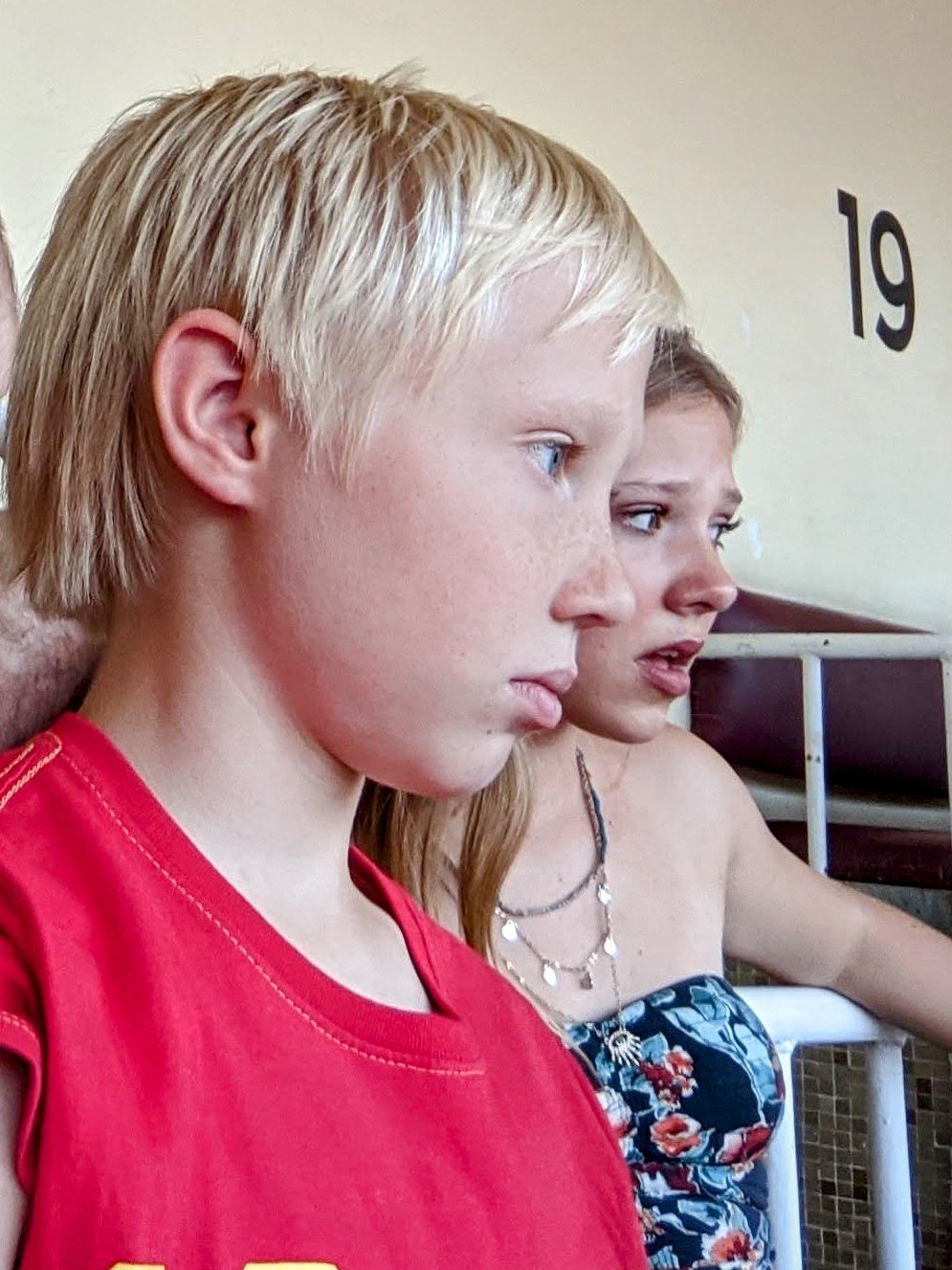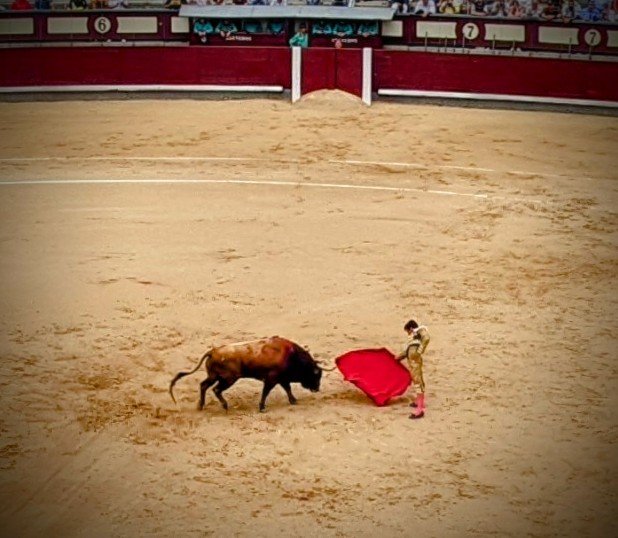The Art That is Bullfighting
Plaza Del Torros Las Ventas, Feria de San Isidro 2022. Madrid, Spain
Introduction to Bull FIghting
“There are only three sports: bullfighting, motor racing, and mountaineering; all the rest are merely games,” Ernest Hemingway. Many may find bullfighting gruesome or inhumane. There are arguments for either side, but that is not what you are here to hear about. What I am here to tell you about is the intricate art that exists within bullfighting.
The matador luring the bull in for a veronica during the Tercio de Muerte
“Bullfighting is the only art in which the artist is in danger of death and in which the degree of brilliance in the performance is left to the fighter’s honor,” Ernest Hemingway. The fight between a man and a bull is a testament to humanity's ability to overcome nature with skill, not with technology, but pure skill. The bull fight exists in 3 acts with the sole purpose of the first two being to test and weaken the bull to a state where the matador has a chance of survival. Even with this weakening of the bull, its strength, speed, and endurance far surpasses that of the matador who cannot outrun the bull, and risks death if the bull so much as touches him. Despite this physical disadvantage, the matador has perfected every movement to, not only avoid being gored, but to turn this fight for survival into a dance between the savage strength of a bull and the refined skill of the matador, whose movements could be compared to a dancer.
Wendi, Gus and Bailey getting ready for the start of Tercio de Varas
Stage 1: Tercio de Varas
As the bull is released into the chamber, the toreros(bullfighters) will distract the bull by drawing it in for a charge. They will then avoid the attack by leading the bull to the side with a large cloth and drawing it over the bulls head. While the toreros distract the bull, the picadors will enter.
The Tercio de Varas begins with an assessment of the bull as he enters the ring and charges the toreros.
They ride attop horses who are surrounded in compressed cotton armor to defend themselves from the bull. The picadors wield long spears. The bull will then be drawn towards the picadors. The bull will choose to attack the horse, ramming it with all of its force. A well trained horse will lean into the bull’s attack. While the bull attacks the horse, the picador will spear its shoulders. This is the first great test of a bull's bravery, and strength. The best bulls will push full force into the spear with no hesitation to attack the horse and the strongest bulls may lift the horse off the ground despite the horse towering over it.
The picador on horseback facing the bull just before the charge.
The bull must be pic’ed, which is to be speared while attacking the horse, twice in two separate instances. While the first act runs its course, the matador will have observed the bull, how straight it charges, or which horn the bull leads with. After the bull has charged the horse twice the president of the arena will bring in the next act by sounding a horn.
A stark change in expression after watching the Picadores work in the Tercio de Varas.
Stage 2: Tercio de Banderillas
As the second act begins there will be a noticeable difference in how the bull behaves, it will be more aggressive, as it has been hurt at this stage. On the other hand, the bull will move a little slower, not from blood loss, but from the effort of charging the horse. Without this fatigue the second act would most likely fail.
Jesus E Colombo of Venezuela places his own banderillas for the bulls he fights.
In the second act three banderilleros will run at the bull taking turns. As they pass the bull they will throw one or two banderillas into the neck of the bull. Banderillas are large wooden barbs commonly decorated with the colors of the banderilleros region. These will stay in the neck of the bull for the remainder of the bullfight. They will both anger, and slow the bull.
Jesus E Colombo placing a third pair of banderillas into the bull.
The banderilleros have one of the most dangerous jobs, because they have no cloth to avoid the bull with. Because of this, other toreros will try to draw the bull off of the banderillero after he has thrown the banderilla. The toreros will not always succeed in drawing away the bulls attention, and banderilleros will sometimes have to outrun the bull for a short distance. This would be nearly impossible if the bull had not gone through the first act. The banderilleros are surprisingly fast and agile. I have even seen some of them jump right over the wall that surrounds the arena.
Wendi, Gus, Bailey and Casey watching the bull fight from the box.
Stage 3: Tercio de Muerte
Now that the second act has been completed, the president of the arena will bring in the third and final act with a horn. The third act is when I believe the real battle begins and when the true art within bullfighting is shown. All the toreros except the matador will leave the arena. While all of the other toreros leave the arena, the matador will be handed a red cloth connected along the length of a pole which the matador will hold. He then unsheaths a blade. The espada, a bullfighter blade, is not highly stylised, with a bright red hilt. It is razor sharp, but will only draw blood once in the fight. The sword is always held in the right hand. When the cloth is also held in the right hand the sword will be used to slightly extend the width of the cloth. This makes passing the bull using the left hand especially difficult.

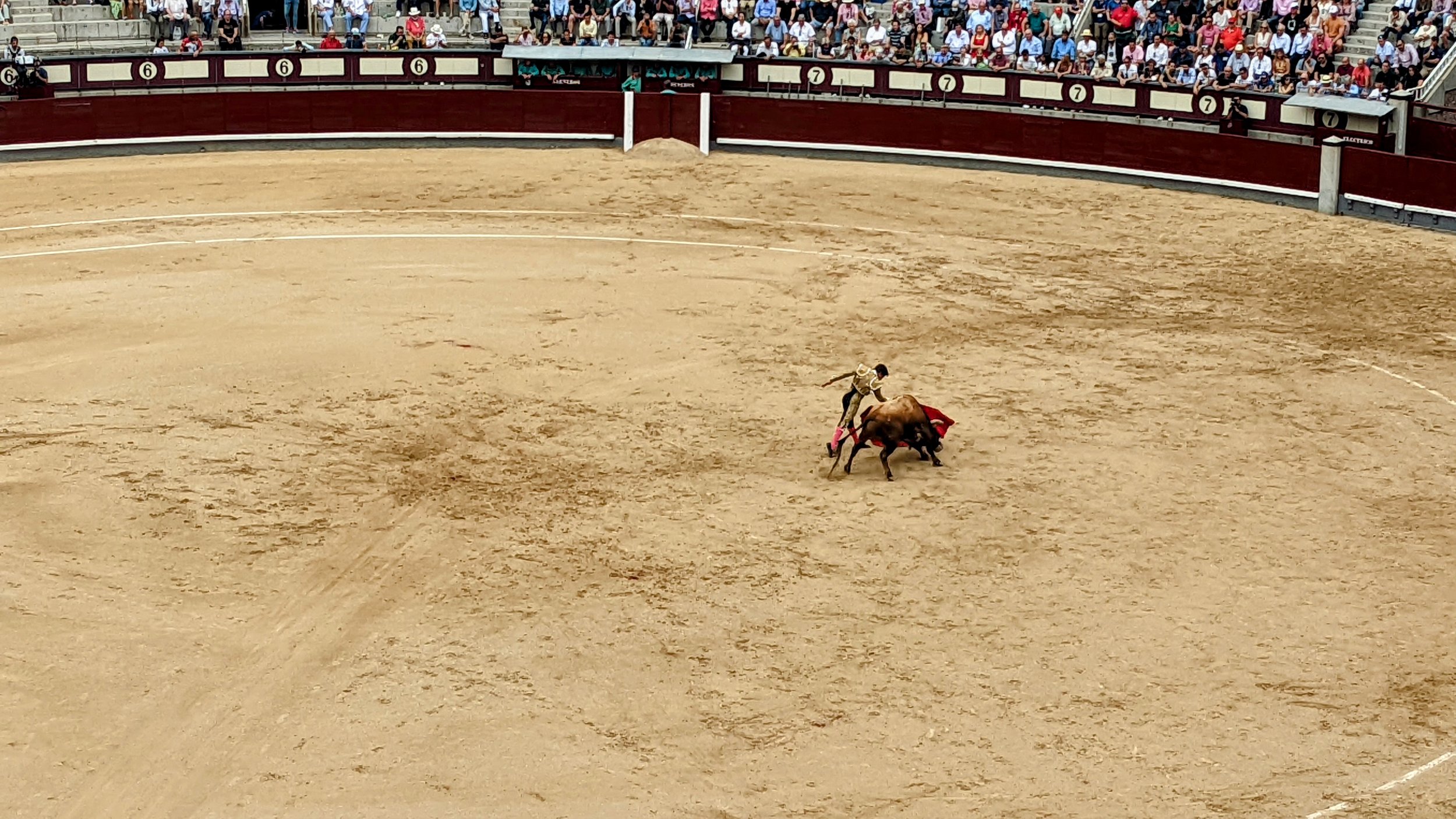
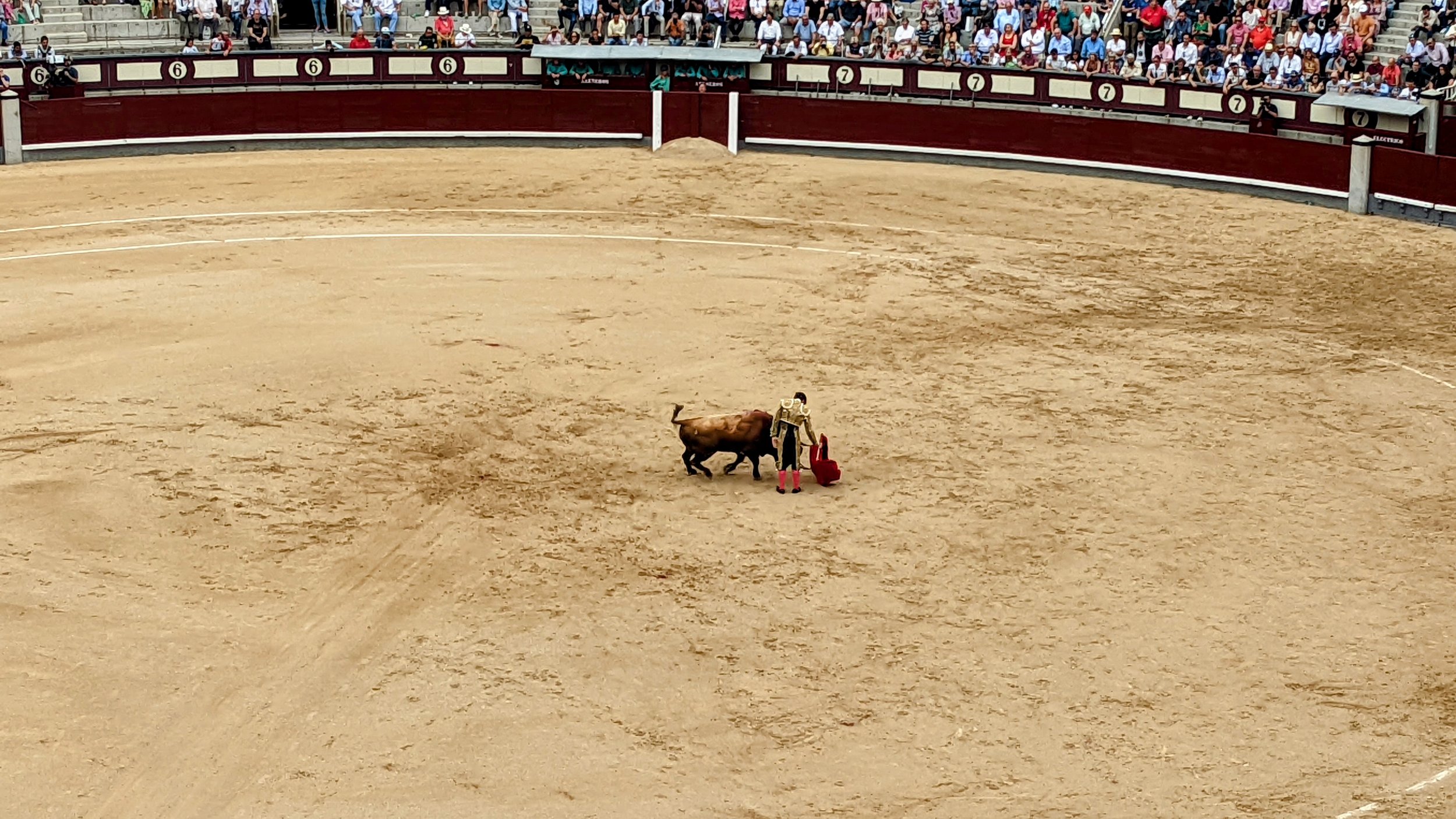

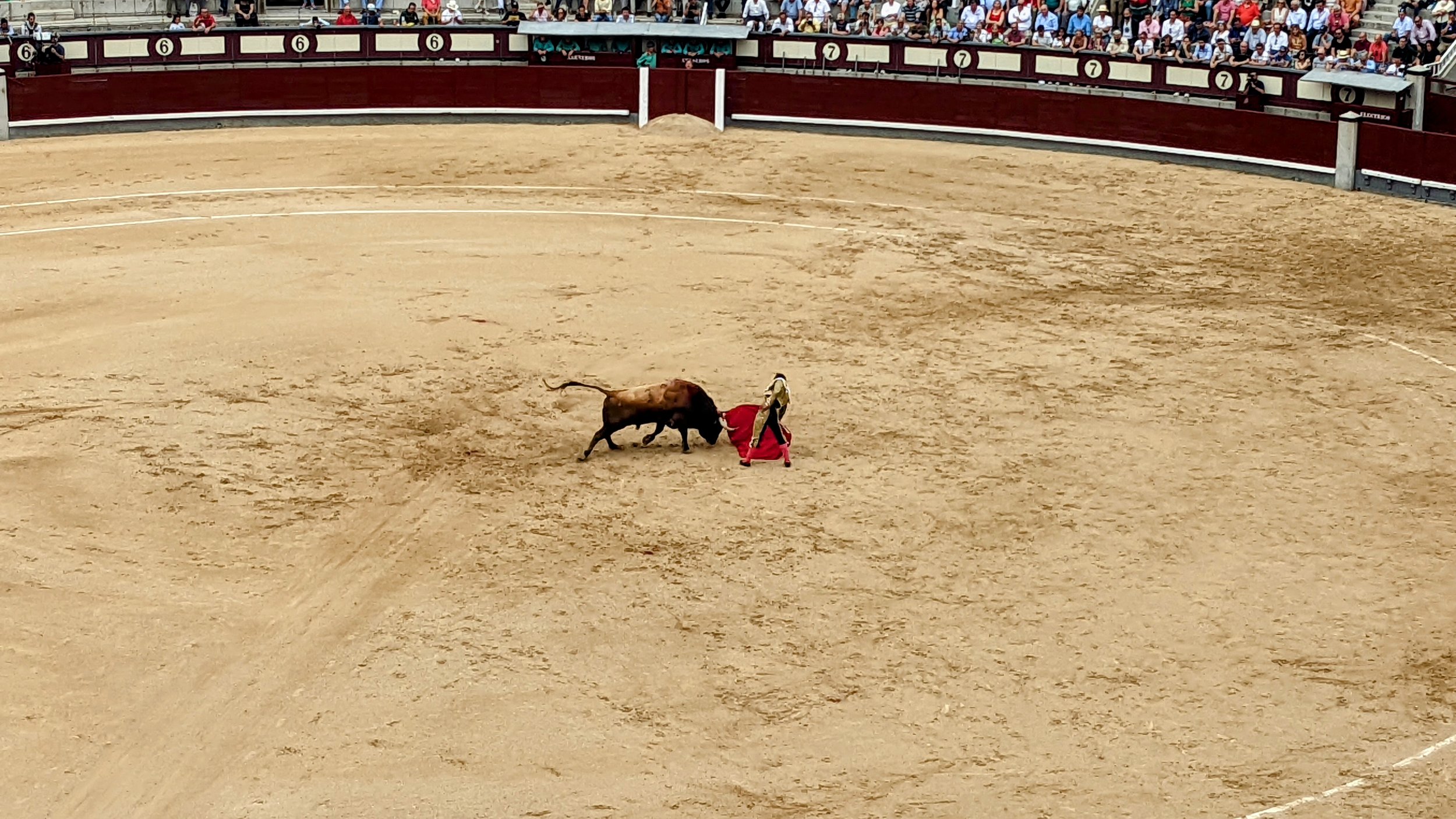
The matador will then engage in a dance with the bull. He will perform one handed veronicas, a pass where the torero leads the bull aside with the cloth and pulls it over the bull’s head. The veronica is said to be named after St. Veronica who was said to have wiped a cloth over Christ's head. He will perform multiple veronicas in a row before performing a half veronica, where the bullfighter cuts short the veronica. This forces the bull to turn quickly and causes it to stop. As the bullfighter performs veronica after veronica many would think this toying with the bull, but the whole time the matador will observe the bull, how straight it turns, which horn it favors and how it holds its head. This act will also tire out the bull.
“For me, bullfighting was this very spiritual engagement of power, with power and death. You're putting yourself against a force that is stronger than you, and you're winning or losing. It’s power, it’s a power play.” Bette Ford. The grace of a matador performing veronicas can only be compared to a dancer as they spin around their partner, perfectly in tune to their partner’s movements. This is the longest act with the amount of time the matador spends varying greatly. In the end the matador will position themself in front of the bull, poised to strike like a snake.
The strike of the blade in the Tercio de Muerte
They will perform an attack where they lure the bull in before plunging their blade into a specific point on the neck of the bull. This strike requires an incredible amount of precision because the blade must miss the spine and rib cage, before piercing the aorta. These few moments are so short that you could miss them just by looking away for a second, but they show the meaning of bullfighting, a fight between man and beast, skill and power, civilization and nature. A few moments where either party could die show the true bravery of both the bull and the matador. Even if only 534 matadors have died in the last three centuries, the chance of death still remains, and if the bullfighter did not have the skill and training that has been beaten into them over years they would die almost every time.
Something goes wrong with this set of veronicas and the Matador gets chased.
“A snake is the most dangerous when cornered,” is a common phrase that perfectly applies here. After the sword has pierced the aorta all the toreros will come out to distract the bull. They will wave their capes at the beast, and as the bull feels its death coming it will fight, and it will fight hard. Sadly even the strength of a beast which was full of power and bravery just minutes ago will fade in around 20 seconds. It will stop charging, and will commonly retreat to a wall. Then it will lay down almost peacefully, accepting its death. Finally, one of the banderilleros will approach the bull, after it has lost enough strength to fight. He will brandish a knife, and stab the spinal cord, ending the poor animals suffering.
This event is not for the faint of heart, and the emotions produced by the danger, suffering, and death are strong.
Conclusions on Bull Fighting
When I went to a bullfight, only one person was gored, the matador. He was gored after the bull had “died” and was laying down, before the spinal cord was cut. The “killing blow” had not killed the bull, and it ended up attacking him. He was thrown into the air and his left thigh gored.
Jesus E Colombo was gored by a bull he presumed to be near death.
Although he was limping from the wound, and his leg was bleeding, killing the bull is a matter of honor. To preserve his honor, he got another sword, and despite his wounds, delivered a second strike. This second strike finally brought down the beast.
The dead bull being dragged from the ring. The meat will be distributed and served in local restaurants.
“I don't believe that anyone connected with bullfighting would deny that what happens in the ring has an element of suffering and perhaps cruelty to it. So then it comes back to whether the suffering and cruelty is justified by its place in a tradition that has deep roots in the culture.” Bette Ford. Many would argue that it is wrong to kill animals for entertainment. I partially disagree. My opinion would be different if the carcass was thrown away, but the meat is all eaten at restaurants near the arena. I believe that the meat industry is worse in every way than bullfighting, but I have accepted that I will eat meat. Additionally bullfighting is an art, and an incredible part of Spanish culture. The resources used to build temples, or have events across the globe could save thousands of lives, but the art, and culture inherent to them justifies the cost. It is no different for bullfighting, which I believe is not an insult to nature, or a crime, but a form of art that pays homage to the power of animals.
A mixed emotions selfie after the bull fight at Plaza del Torros Las Ventas. Madrid, Spain





